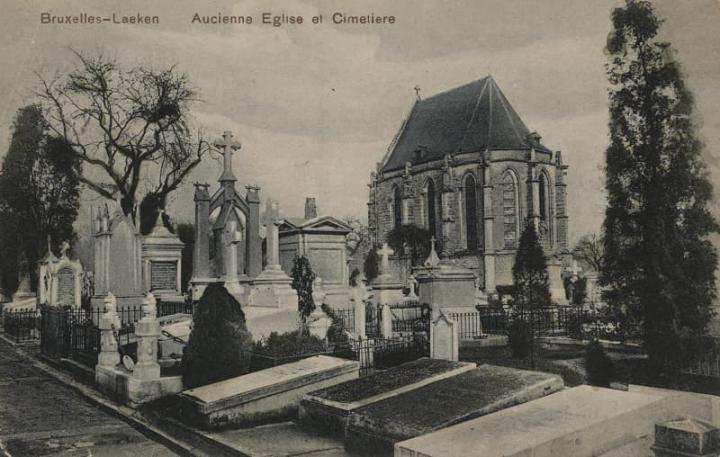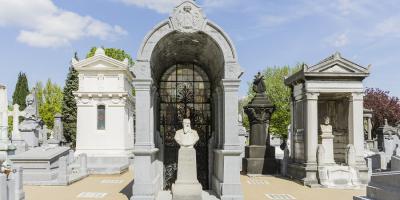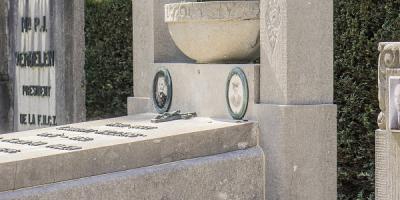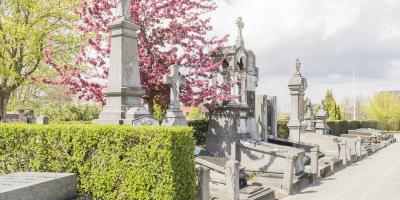History of the cemeteries of the City of Brussels
Discover the history of the cemeteries of the City of Brussels: the cemeteries of Brussels-Evere, Laeken, Neder-Over-Heembeek and Haren.
Middle Ages
In the Middle Ages, burials were the responsibility of the Church. Sovereigns, aristocrats and members of the senior clergy were buried within the sanctuary. Ordinary men and women were laid to rest in the cemetery adjoining the church. Over the centuries, the increase in the population and cholera epidemics caused cemeteries to fall into disuse.
Decree by Emperor Joseph II
On 26 June 1784, Emperor Joseph II issued a new decree. His aim was to prevent unsanitary conditions by banning the burial of the dead near churches. The decree also ordered that cemeteries be surrounded by an outer wall and that those within towns and cities be closed.
Further to this decree:
- Laeken cemetery remains the only one around the church
- the parishes in the City of Brussels joined forces to open three new cemeteries in Saint-Josse-ten-Noode, Saint-Gilles and Molenbeek-Saint-Jean
Haren cemetery, around the St. Elisabeth's Church, did not fall under the decree. It finally became full at the end of the 19th century, without any possibility of extension. So a new cemetery was made on a site outside the residential area.
Decree by Napoleon
In 1804, a Napoleonic decree placed the management of cemeteries in the hands of the communes. The principle of an everlasting concession then emerged. Families took advantage of this to build truly commemorative monuments, some of which were very costly but intended to last. These monuments were the work of certain architects and sculptors, often leading names.
The first queen of the Belgians, Louise-Marie, asked to be buried in Laeken. Members of aristocracy and the middle classes then rushed to be buried nearby. They built monuments which were often impressive and costly.
The 19th century was marked by the 'cemeteries war'. Those who advocated the management of cemeteries by church councils confronted those who believed that the civil authorities should take charge of this task. The Court of Cassation had to intervene, granting the management of the cemeteries to the communes.
Cemetery of Brussels
Growing urbanisation prevented the extension of cemeteries. On 2 June 1874, the municipal board decided to purchase 30 hectares of land in the commune of Evere. It was to be used to make a huge main cemetery. The architect Louis Fuchs designed a landscaped park, less than half of which was to be set aside for burials. The purchase of an additional plot of land soon brought the total surface area to 38 hectares.
Broad avenues run through the cemetery of Brussels, linking major roundabouts. Impressive funerary monuments stand on these roundabouts. The plots are separated by hedges along winding paths. Architect Victor Jamaer of the City of Brussels designed the two large Neo-Etruscan pavilions at the entrance and the mortuary at the back of the cemetery. Nine hundred tombs of prominent figures were transferred from old, disused cemeteries to the new site. These include:
- fallen English soldiers
- soldiers who died in the Battle of Waterloo
- Joséphine Napoléone de Montholon, the 'god-daughter' of Emperor Napoleon
- painter Jacques-Louis David
- François Van Campenhout, composer of La Brabançonne (the Belgian national anthem)
- Adolphe Quetelet, founder of the Royal Observatory
- Charles De Brouckère, Mayor of Brussels
The cemetery of Brussels was inaugurated on 15 August 1877 by the Mayor of Brussels, Jules Anspach.
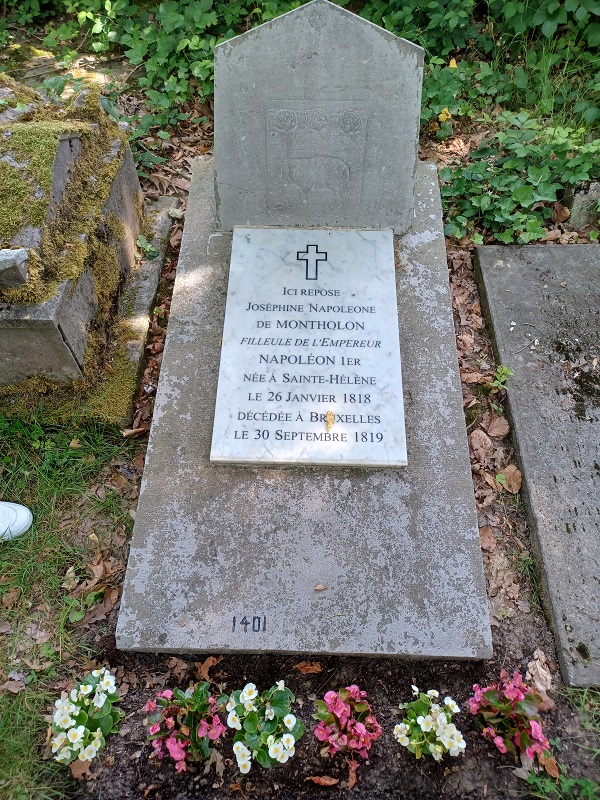
Cemetery of Laeken
Requests for burial sites at Laeken Cemetery continued to rise. In order to make maximum use of the space available, a system of underground galleries was suggested in 1876. Emile Bockstael, an engineer and future Mayor of Laeken, took charge of this construction project. These galleries, never before seen in Brussels, were inspired by those found in Italy, Spain and Portugal.
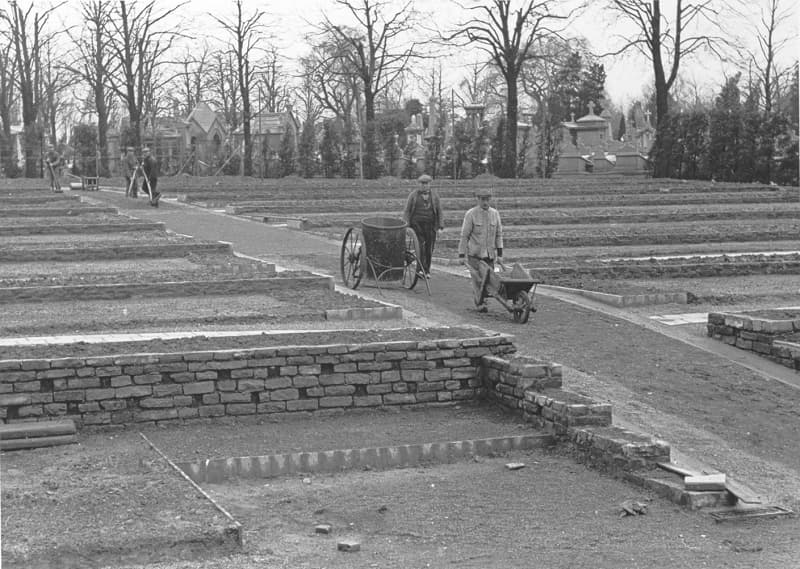
© Cemetery of Laeken, AVB - ASB CI C-02833
Cemetery of Neder-Over-Heembeek
The boroughs of lower Heembeek (Neder) and upper Heembeek (Over) each had their own parish church with a cemetery. In Neder-Heembeek, this was the Church of St Peter and St Paul, in Over-Heembeek, the Church of St Nicholas. The two boroughs merged in 1840, but the commune did not purchase a site to serve as a final resting place until 1893. This came into service as of 1895, after which the two old parish cemeteries were closed. The Neder-Over-Heembeek cemetery was extended to its present size in 1935.
Cemetery of Haren
After Haren became part of Brussels in 1922, the old cemetery was abandoned. As in Neder-Over-Heembeek, tombstones were removed and concessions were transferred to the new cemetery. The old cemetery became a public park.
Ceremonies and commemorations
Annual commemorations
On 1 November each year, the authorities of the City of Brussels pay tribute to veterans and prominent figures through a number of events to mark All Saints Day. Flowers are laid during several ceremonies.
Ceremonies at the Cemeteries of Brussels in Evere, Laeken, Neder-Over-Heembeek and Haren as well as at the crematorium in Uccle.
Fifteen times a year, foreign embassies and various associations commemorate important events such as the Battle of Waterloo or pay tribute to prominent figures such as Théodore Verhaegen, the founder of the Free University of Brussels (ULB).
Special commemorations
Commemorations are also held in memory of major events: the 50th anniversary of the 'Innovation' department store fire in 2017, the centenary of the end of the First World War in 2018, and much more.
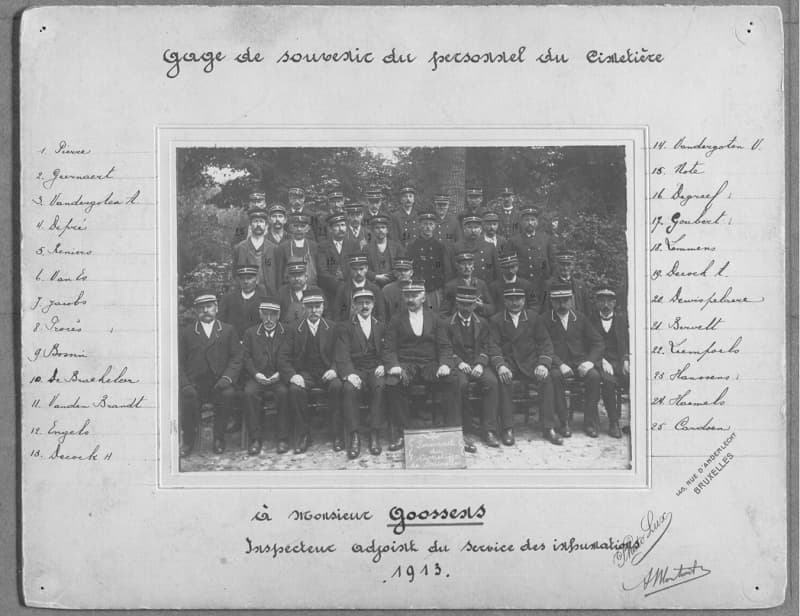
Burial Service of the City of Brussels, AVB - ASB CI F-0633, 1913 © Lux
SEE ALSO
